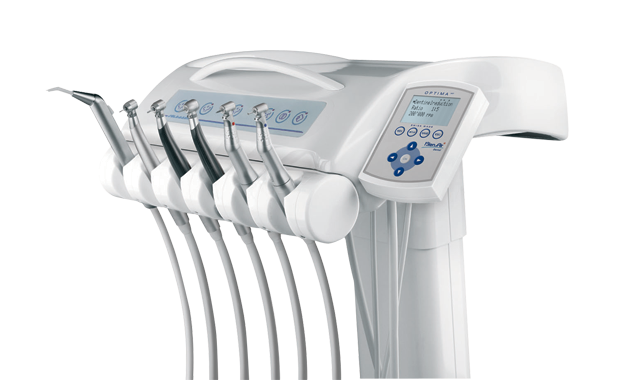Double Take: "...because of the constant torque, it cuts right through, like butter.”
Dr. Andrew W. Chin, a graduate of UCLA School of Dentistry, has been in practice at Tri-City Dental Care of Cerritos, California since 1998. His experience includes esthetic dentistry, implantology (placement and restoring of dental implants) and working with medically compromised patients. Here, Dr. Chin talks to DPR about his experiences using electric handpieces from Bien-Air.

Dr. Andrew W. Chin, a graduate of UCLA School of Dentistry, has been in practice at Tri-City Dental Care of Cerritos, California since 1998. His experience includes esthetic dentistry, implantology (placement and restoring of dental implants) and working with medically compromised patients. He is a credentialed member of the American Academy of Implant Dentistry.
Dentists deal with three factors when choosing equipment. His or her ability to do a particular procedure with that piece of equipment is the first, followed by how that piece of equipment will affect the final quality of the finished procedure and, lastly, how it plays into the comfort of the patient. Here, Dr. Chin talks to DPR about his experiences using electric handpieces from Bien-Air.
Related reading: Improved options, patient comfort delivered by Bien-Air
Benefits from using these electrics
Dr. Chin uses Bien-Air electric handpieces, having switched to using them for all the procedures he does four years ago. He is a firm believer that electric handpieces help him provide quality results for his patients.

Dr. Chin had been using electric handpieces for orthodontic implants and using air handpieces for general dentistry before making the full-time switch. He said there is a period of adjustment for a dentist when switching to electric handpieces, but he stresses that it is worth it.
“With an air handpiece, you hold it like a pen or pencil. With an electric handpiece, you have to relearn to hold it. You have to find the sweet spot to hold it,” Dr. Chin says.
Improved efficiency, comfort
Some dental procedures require the removal of old dental work and Dr. Chin says an electric handpiece makes doing that much easier.
“In general, when you are removing an old crown or old bridge, because of the constant torque, it cuts right through, like butter,” he states.
In regards to patient comfort, the torque potential allows the electric handpiece to do procedures quicker because it can be adjusted from slower to quicker speeds. Dr. Chin says his patients notice how the electric handpieces are quieter. Additionally, the heads have gotten smaller, which also plays into patient comfort.
Cost savings
The California clinician likes the cost savings of electric handpieces.
“You don’t have to change turbines as often. I haven’t had to change turbines yet,” he says.
He is quick to encourage other dentists to switch to electric handpieces. “I tell them it took a little while for me to adjust, but with any new technique there is a learning curve. There is no reason not to switch with how advanced they are,” he says.
Dr. Chin believes that electric handpieces will continue to evolve. The current benefits make this a great choice for today’s dentists, but he expects improvements in the future will only help cement electric handpieces as the choice for more and more clinicians.
“Down the road, the technology will continue to improve with size being the biggest factor. The head will definitely get smaller,” he says.
Bien-Air Electrics
The MX2 LED motor is effective at low speeds, due to the Smart-Logic electronic control, providing constant torque across all speed ranges - 100 to 200,000 rpm. The handpiece is also 30-percent shorter and 23 percent lighter. Bien-Air’s latest EVO.15 handpiece has been proven never to exceed body temperature thanks to the patented COOLTOUCH+™ heat-arresting technology. The EVO.15 contra-angle and the MX2 brushless micromotor allow users the ability to adapt to different situations and procedures, all with seamless integration into any existing dental unit. For more inforamtion, visit bienair-evo15.com.